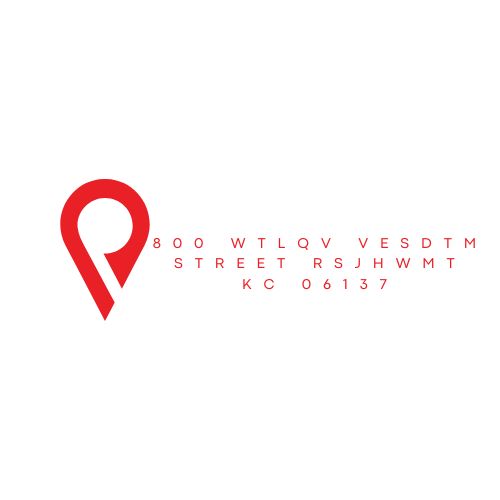Introduction to SOA OS23
SOA OS23, or Service-Oriented Architecture Operating Standard 2023, represents a modern evolution of the traditional Service-Oriented Architecture (SOA) framework. Unlike conventional operating systems or standalone software, SOA OS23 is a conceptual and technical blueprint designed to orchestrate modular, scalable, and intelligent digital systems. Launched in 2025, it builds on the foundational principles of SOA—modularity, interoperability, and reusability—while integrating advanced features like event-driven logic, AI orchestration, and ethical governance to meet the demands of today’s hyper-connected, cloud-based, and privacy-conscious world.
What is Service-Oriented Architecture (SOA)?
Service-Oriented Architecture is a design paradigm where software components, known as services, are created to perform specific functions and communicate over a network via standardized interfaces. These services are loosely coupled, meaning they operate independently and can be reused across applications. SOA emerged in the early 2000s to break down monolithic systems, enabling flexibility, scalability, and easier integration of diverse technologies. SOA OS23 takes this concept further, adapting it for modern challenges like edge computing, AI integration, and regulatory compliance.
Understanding the “OS23” Component
The “OS23” in SOA OS23 likely stands for “Operating Standard 2023,” indicating a framework or set of guidelines established in 2023 to standardize service-oriented practices for the future. It is not a traditional operating system like Windows or Linux but rather a strategic model that governs how services interact across distributed environments—cloud, edge, and on-premises. While not a widely recognized standard product, SOA OS23 may represent a hypothetical or proprietary implementation by a consortium, community, or organization, blending traditional SOA with modern tools like containers, microservices, and AI.
Key Features of SOA OS23
SOA OS23 introduces a robust set of features to address the complexities of contemporary digital ecosystems:
-
Modular Design: Services are broken into independent, self-contained units with embedded versioning, documentation, and testing endpoints, allowing dynamic updates without disrupting the system.
-
Event-Driven Architecture: Instead of static request-response cycles, SOA OS23 treats inputs (user actions, sensor data, API calls) as events, enabling services to react asynchronously for real-time responsiveness.
-
AI and Semantic Interoperability: AI-driven mediation layers enable services to understand data context, not just format, facilitating seamless communication across diverse systems, languages, and schemas.
-
Ethical Governance: Each service includes metadata for access rules, privacy policies, and regional compliance (e.g., GDPR, EU AI Act), ensuring adherence to legal and ethical standards.
-
Human-in-the-Loop: Critical decisions in sectors like healthcare or finance can be flagged for human review, balancing automation with accountability.
-
Cloud and Edge Support: Native compatibility with cloud platforms (AWS, Azure, Google Cloud) and edge nodes ensures flexible, high-availability deployments.
-
Containerization: Integration with tools like Docker and Kubernetes allows isolated, scalable service management.
Benefits of SOA OS23
Adopting SOA OS23 offers tangible advantages for businesses and developers:
-
Scalability: Services can be scaled independently, adapting to demand without overprovisioning.
-
Resilience: Loose coupling ensures a failure in one service doesn’t crash the entire system.
-
Flexibility: Plug-and-play modules and platform-agnostic design support rapid development and integration with legacy or new systems.
-
Cost Efficiency: Reusable components and optimized resource use reduce development and infrastructure costs.
-
Real-Time Adaptability: Event-driven logic and context-aware routing (based on user intent, location, or compliance) deliver responsive, personalized experiences.
-
Enhanced Security: Built-in token-based authentication, HTTPS, and role-based access controls protect data and operations.
Real-World Applications
SOA OS23’s versatility makes it transformative across industries:
-
Healthcare: Integrates wearables, health records, and AI diagnostics, ensuring real-time data sharing, patient privacy, and compliance with regulations like HIPAA.
-
Smart Cities: Coordinates traffic sensors, air quality monitors, and emergency services, dynamically adjusting traffic lights or alerting hospitals during crises.
-
Finance: Powers event-driven fraud detection, AI risk assessment, and compliant transaction processing, with human oversight for edge cases.
-
Retail: Manages inventory, customer service, and payment gateways as separate services, enhancing uptime and personalizing shopping via real-time analytics.
-
Manufacturing: Connects sensors, robotic arms, and procurement in a unified mesh, with predictive maintenance AI and ethical adapters for fair production decisions.
Challenges and Considerations
While powerful, implementing SOA OS23 comes with hurdles:
-
Complexity: Managing distributed, event-driven services requires advanced tooling, metadata mapping, and observability.
-
Legacy Integration: Older systems may struggle to align with modern modules, increasing initial costs and time.
-
Change Resistance: Teams may resist shifting from traditional to modular architectures, necessitating training.
-
Human Oversight: Real-time decision fatigue could arise from frequent escalations in high-stakes scenarios.
Implementation Best Practices
To successfully adopt SOA OS23, consider these steps:
-
Assess Current Systems: List microservices, data flows, and legacy integrations to identify gaps.
-
Start Small: Begin with non-critical services, enabling observability and failovers.
-
Leverage Modern Tools: Use Dapr, gRPC, or HTTP translators for legacy modules; integrate with Kafka or NATS for event streams.
-
Prioritize Security: Define per-endpoint RBAC policies and avoid shared secrets across containers.
-
Set Metrics: Establish service-level indicators (SLIs) and objectives (SLOs) for performance and compliance.
-
Train Teams: Educate staff on modular design, event-driven logic, and ethical governance.
The Future of SOA OS23
SOA OS23 signals a paradigm shift, blending SOA’s core strengths with AI, edge computing, and ethical design. Its roadmap promises deeper AI integration, blockchain for service validation, and expanded IoT support. As businesses face growing demands for agility, compliance, and user trust, SOA OS23 offers a resilient, adaptive blueprint for digital ecosystems. Whether for startups or enterprises, it’s poised to redefine how we build, deploy, and manage software in 2025 and beyond.
Conclusion
SOA OS23 is more than a technical framework—it’s a strategic vision for modular, intelligent, and human-centric systems. By combining event-driven orchestration, AI-enhanced interoperability, and built-in governance, it empowers organizations to navigate the complexities of modern technology. From healthcare to smart cities, its applications drive efficiency, innovation, and trust. While challenges exist, thoughtful implementation can unlock SOA OS23’s potential, making it a cornerstone for the future of digital architecture.





